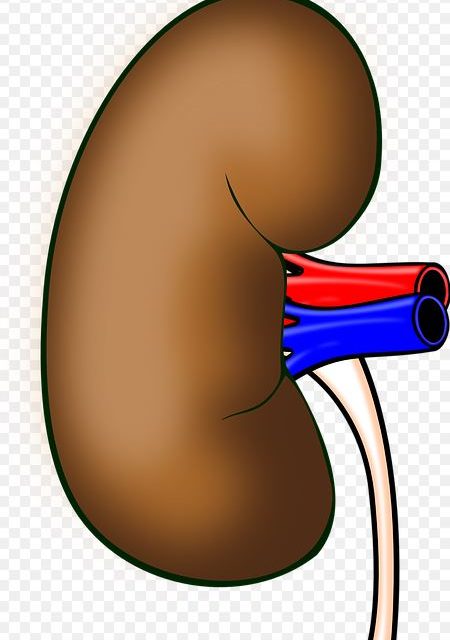There are many contributors to diabetic kidney disease, one of which is overactivation of the mineralocorticoid system (mediated by a hormone called aldosterone).
Finerenone is a nonsteroidal and highly selective mineralocorticoid receptor antagonist (MRA), meaning that it blocks the activation of the MR receptor. As part of its mechanism of action, finerenone has been shown to reduce chronic inflammation and fibrosis (scarring) in the kidney. It also has anti inflammatory and anti fibrotic effects in heart muscle and blood vessel (endothelial and vascular smooth muscle) cells. Finerenone is not yet available for clinical use, but is currently under active investigation in phase 3 clinical trials.
In the FIDELIO trial, recently published in the New England Journal of Medicine, the efficacy of finerenone to reduce progression of kidney disease in people with chronic kidney disease and type 2 diabetes was assessed. The investigators randomized 5,734 patients with chronic kidney disease and type 2 diabetes (on maximally tolerated dose of ACEi or ARB) to receive finerenone vs placebo. At baseline, the mean GFR was 44, and mean urine albumin was about 850 mg/g (about 96mg/mmol, or 1.4 g/day). The primary endpoint was a composite of time to kidney failure, ≥40% decrease in GFR, or renal death. Diabetes at baseline was fairly well controlled (mean A1C 7.7%), and systolic blood pressure was a little above target at 138mmHg.
After a median of 2.6 years, the primary endpoint was reduced by 18%. Said another way, treating 29 people for 3 years resulted in one less kidney event. The benefit was seen to emerge after about a year of treatment. The study also found (as a secondary CV composite endpoint) a 14% reduction in time to CV death, non fatal MI, non fatal stroke or hospitalization for heart failure. The number needed to treat to prevent one of these cardiovascular events was 42 after 3 years, and the benefit was seen as soon as a month after starting treatment.
In terms of side effects, finerenone was well tolerated. Potassium levels were slightly higher (0.23 mmol/L) on finerenone vs placebo. The risk of elevated potassium requiring discontinuation of medication was higher than placebo (2.3% vs 0.9%). (baseline potassium had to be ≤4.8 mmol/L to qualify for the study). There was no difference in gynecomastia (male breast enlargement) between groups (6 in the finerenone group and 6 in the placebo group).
While other MRAs exist, including spironolactone and eplerenone, finerenone is different in many ways. Spironolactone and eplerenone are steroidal MR antagonists with their effects more concentrated in the kidneys, whereas finerenone is nonsteroidal, larger, and has a more balanced effect in kidneys and other tissues (including the cardiovascular system). This may be why finerenone has a lower risk of hyperkalemia (elevated potassium) than spironolactone or eplerenone. Finerenone has more anti inflammatory properties than its older cousins, which may be related in part to a different mode of MR inactivation and different effect on downstream gene expression. As discussed in the accompanying NEJM editorial, finerenone is highly selective for the MR receptor, so it doesn’t seem to cause anti-androgen effects such as breast enlargement in men, whereas this is a common side effect of spironolactone. Finally, there are no renal outcome trials with spironolactone nor eplerenone, and the risk of these older agents causing hyperkalemia is higher in people with reduced kidney function.
Since the time this study was started, the SGLT2 inhibitors have found an important place in kidney protection in people with type 2 diabetes. Only about 4.5% of people in the FIDELIO study were on SGLT2- at baseline, with about 7% of patients being started on SGLT2- during the course of the study. It would be interesting and important to know from future data, how finerenone and SGLT2- work in concert.
BOTTOM LINE: Finerenone holds promise as a powerful tool to help protect people with type 2 diabetes and chronic kidney disease.
Disclaimer: I receive honoraria as a continuing medical education speaker and consultant from the makers of finerenone (Bayer).
Share this blog post using your favorite social media link below!
Follow me on twitter! @drsuepedersen
www.drsue.ca © 2021












